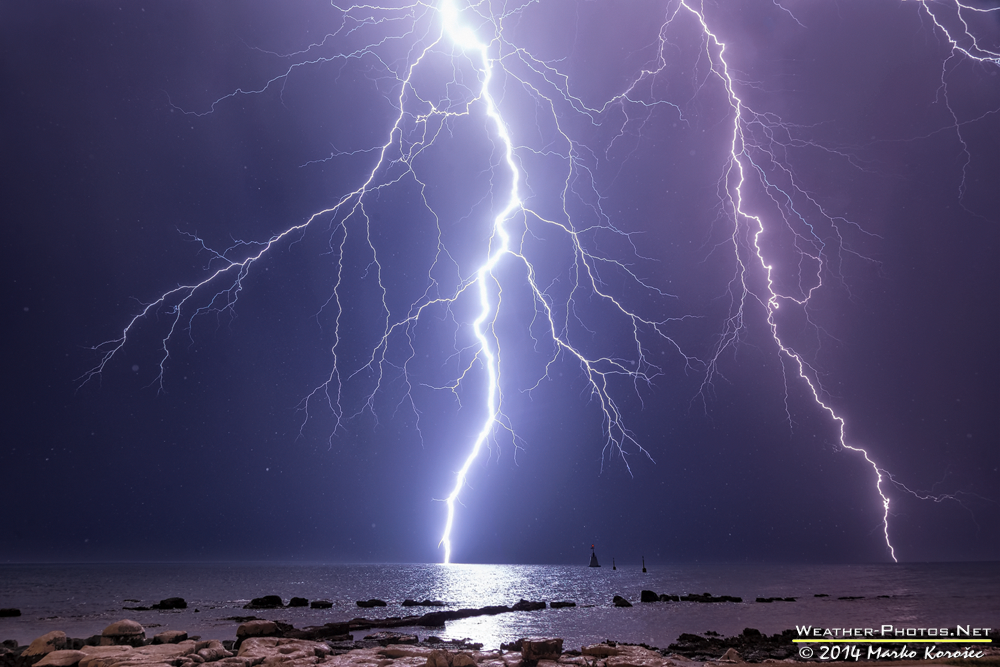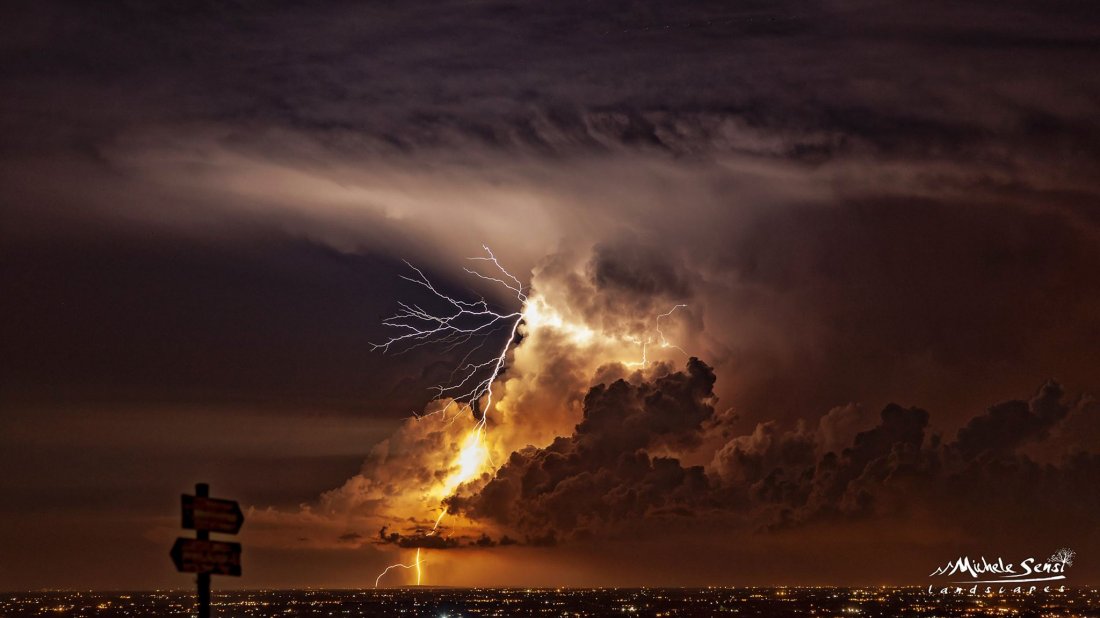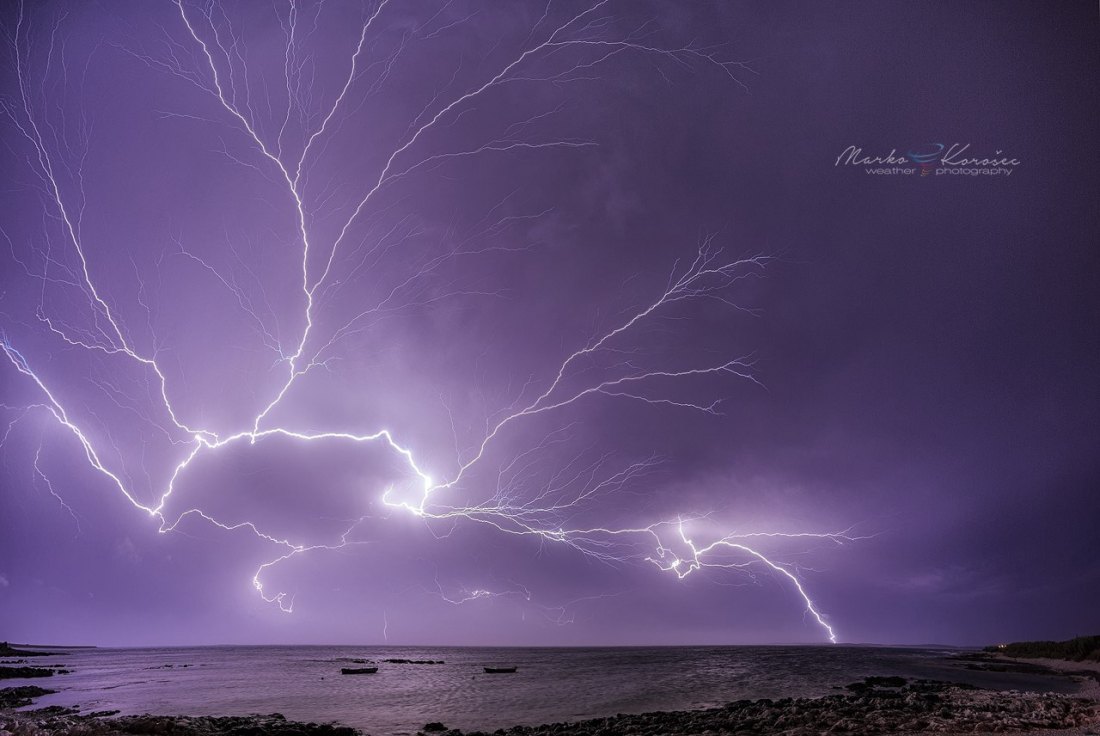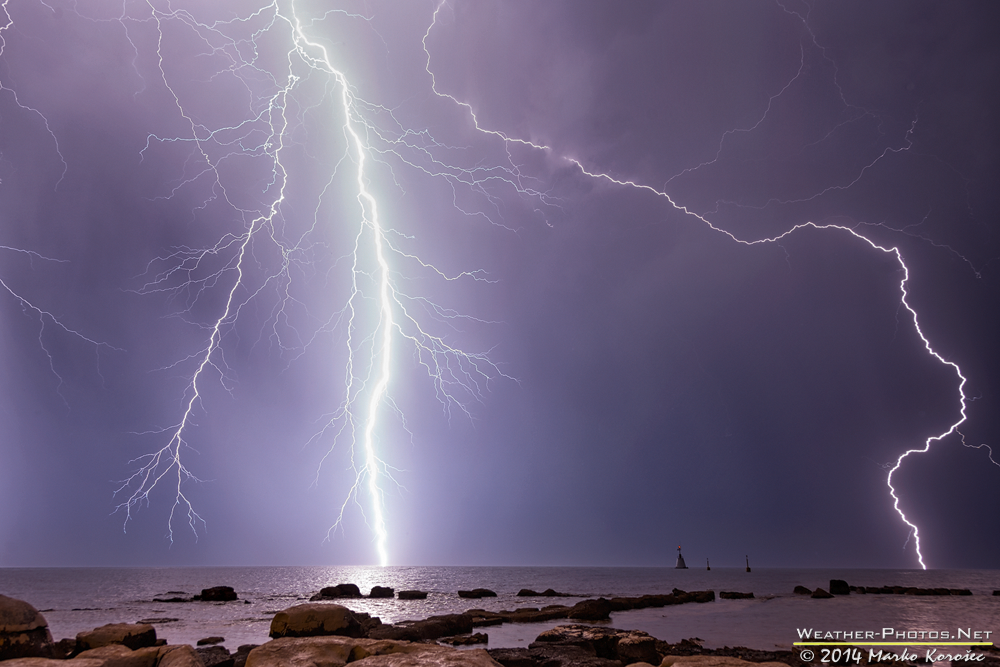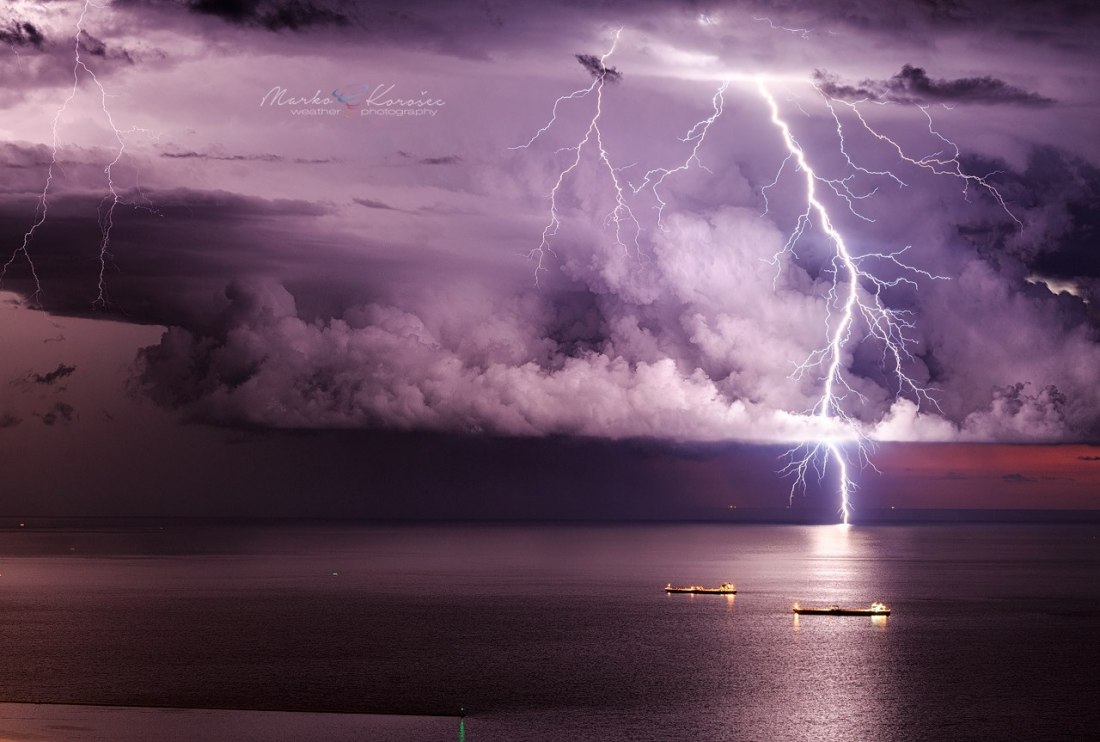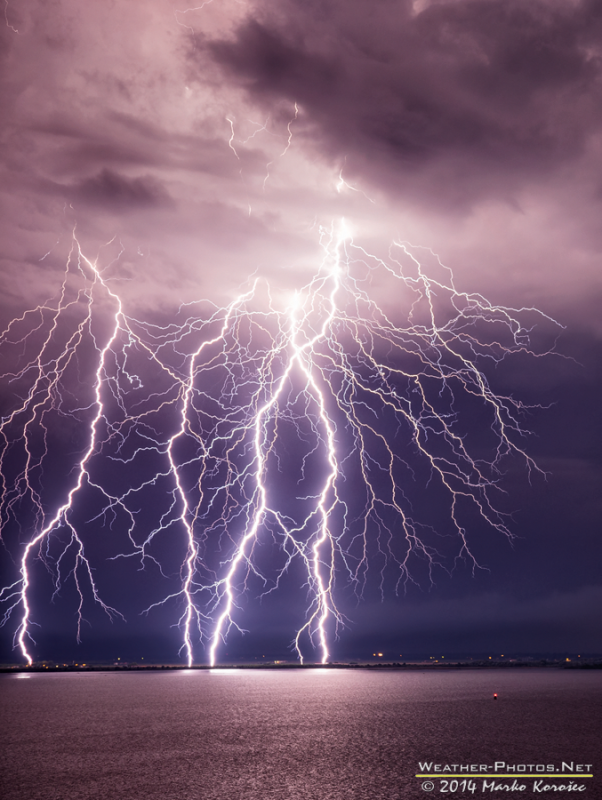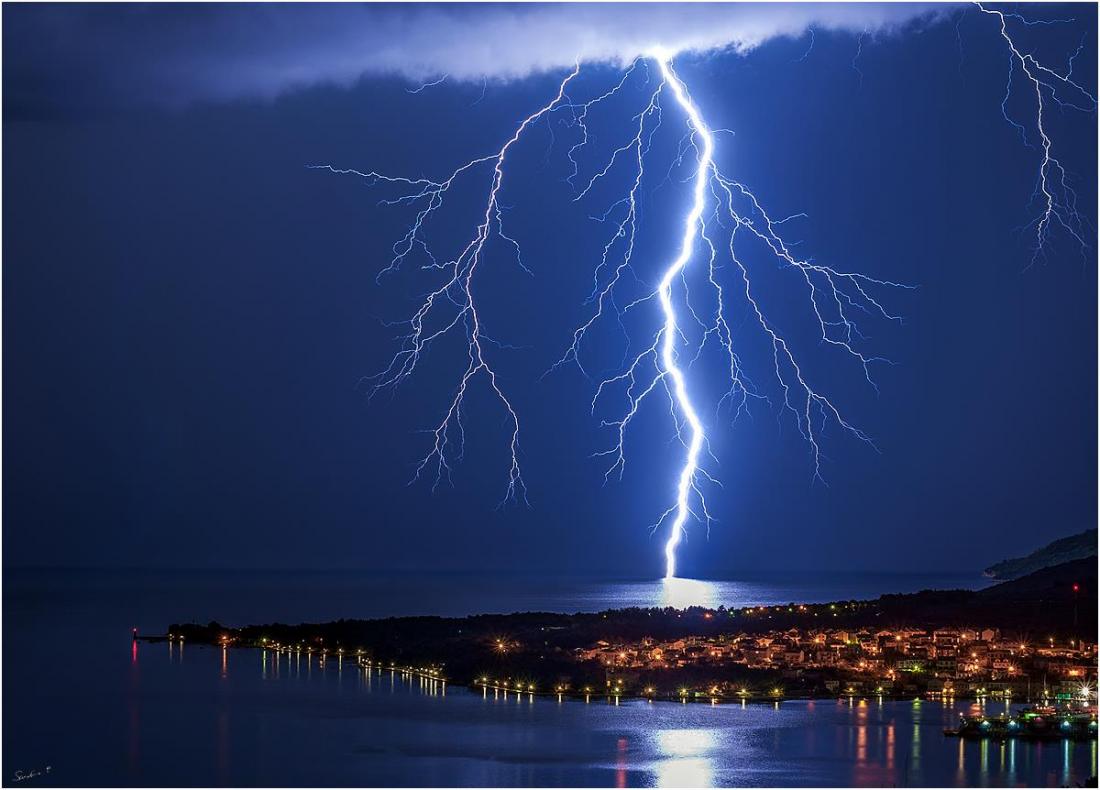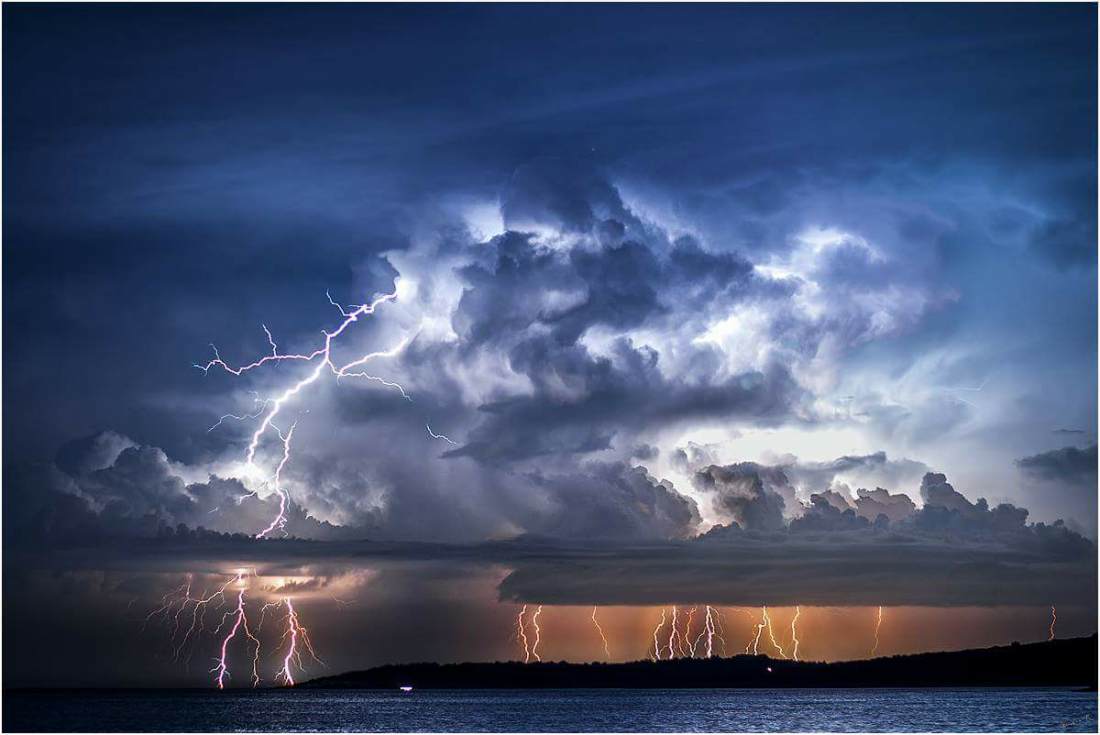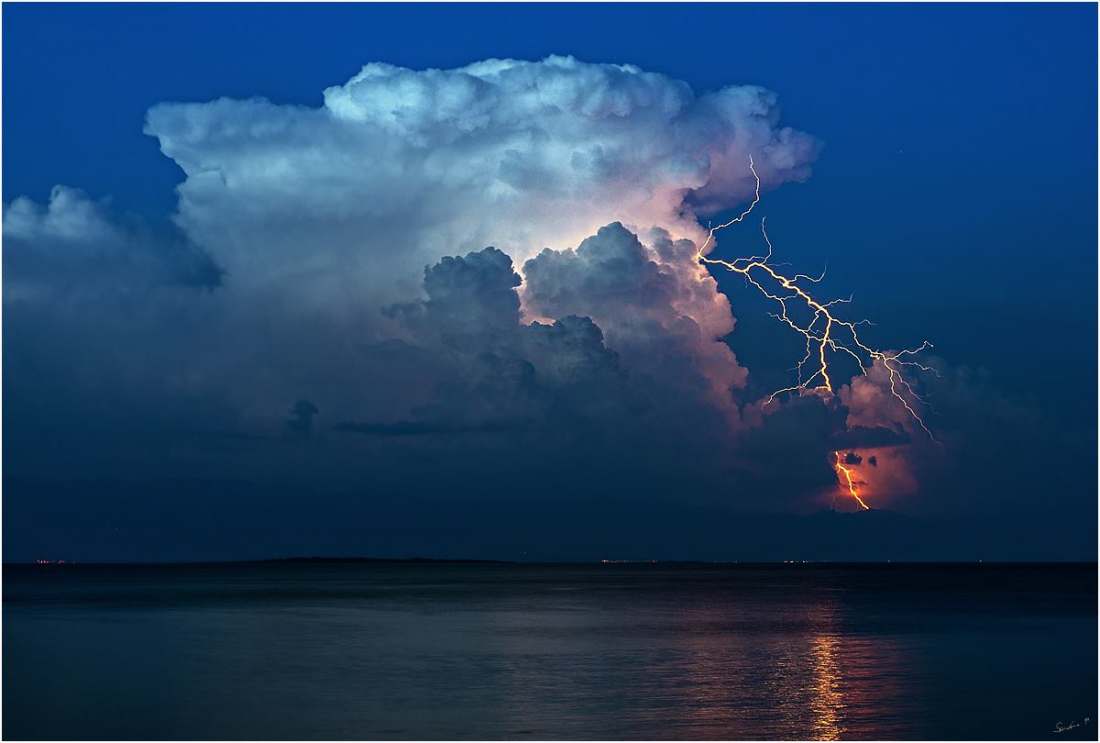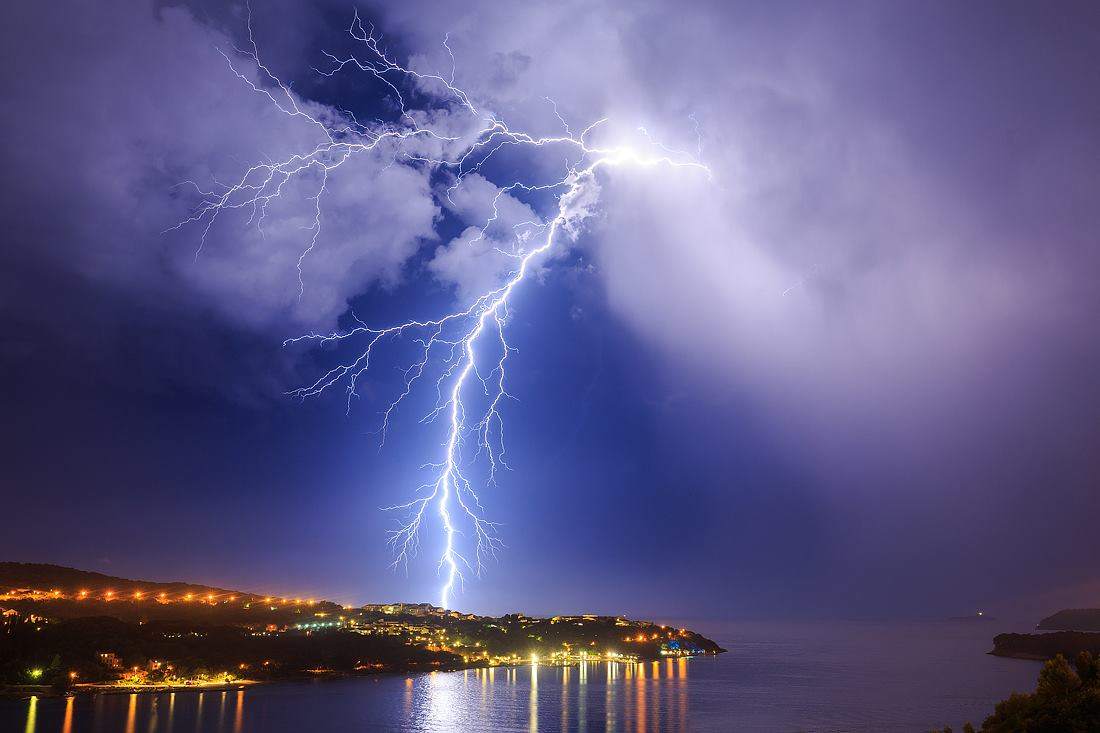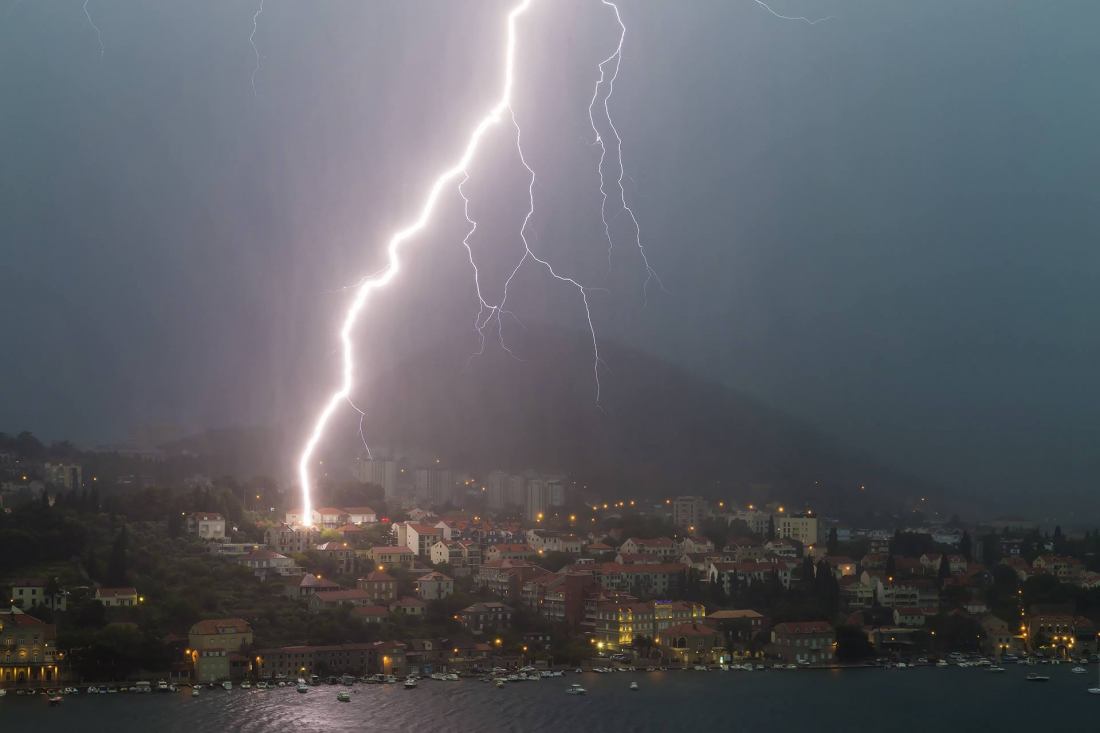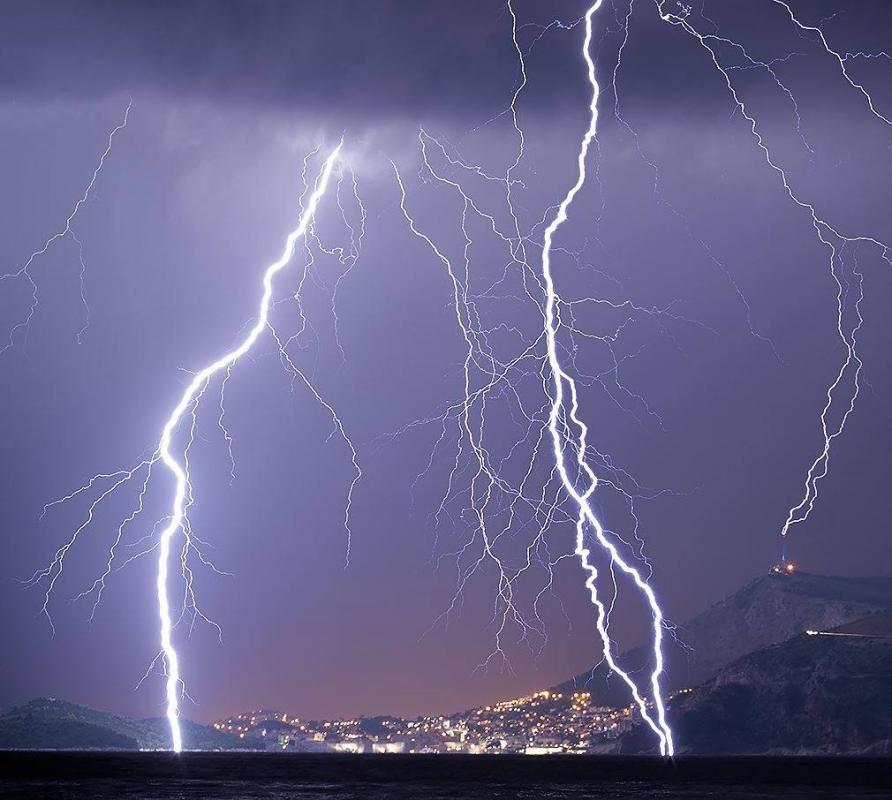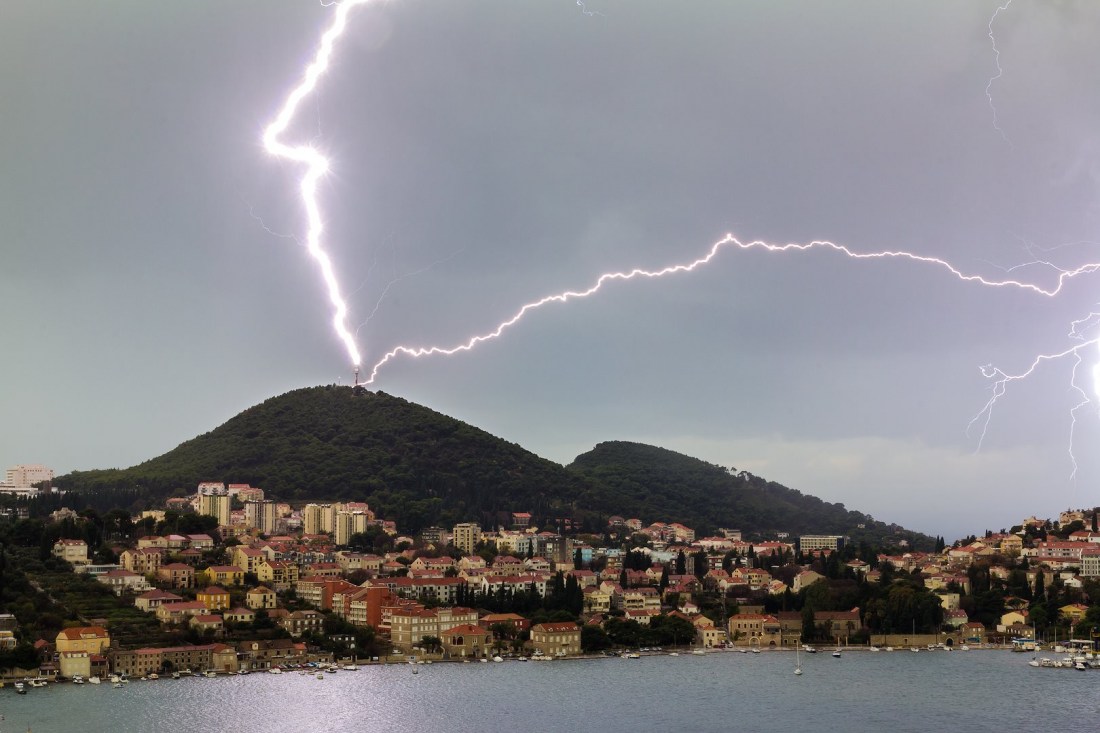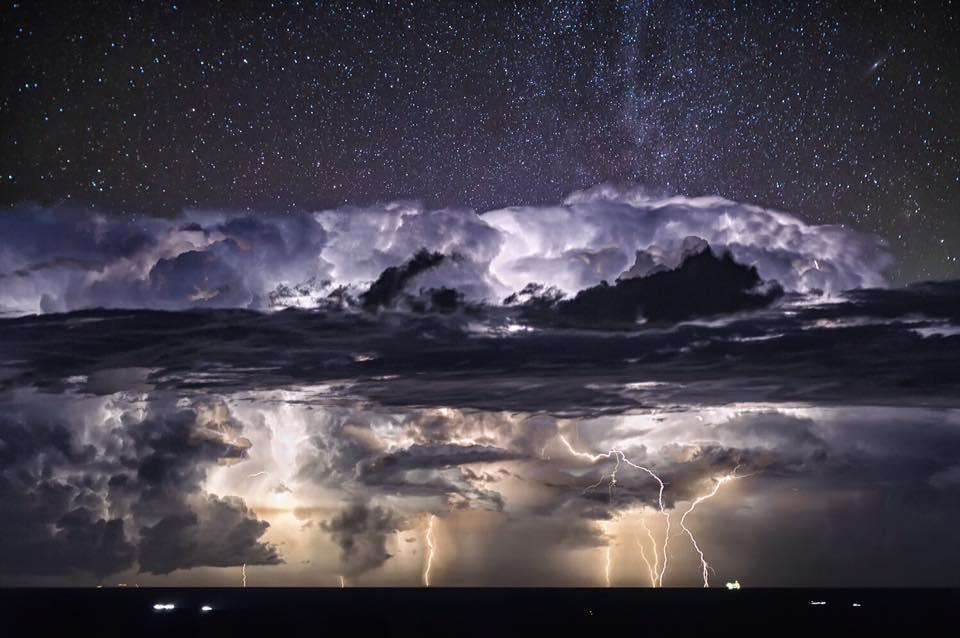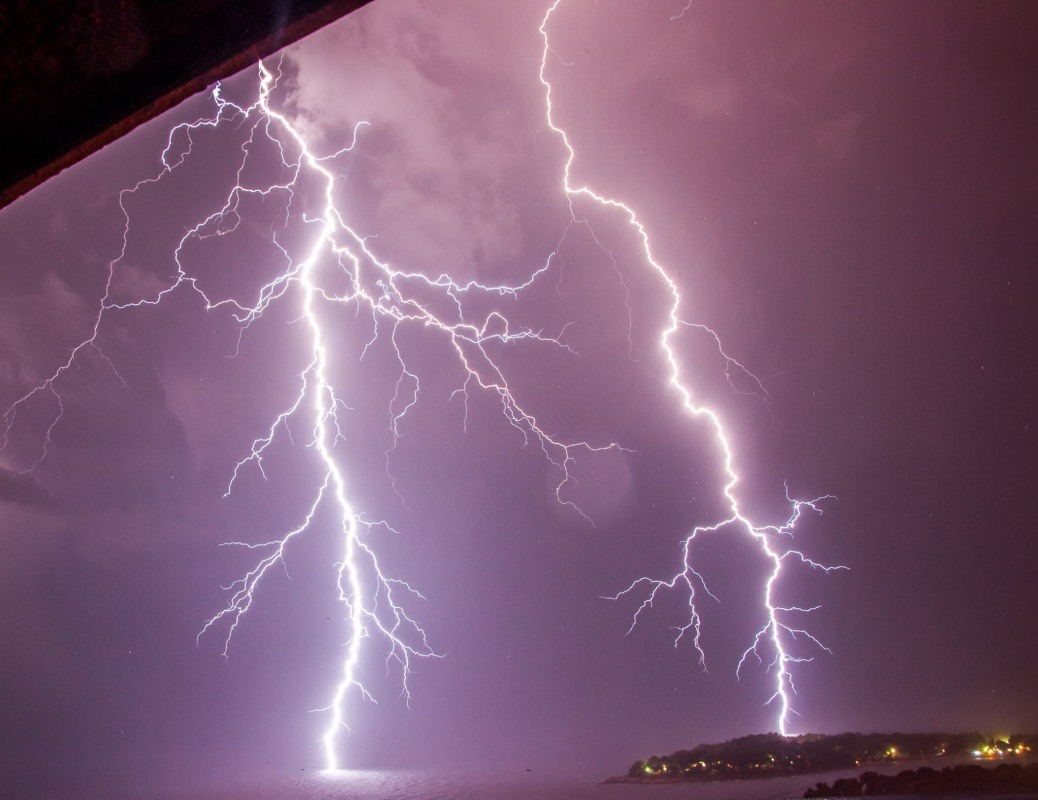Which places in Europe get the most lightning? What are Europe’s lightning hot spots?
It is official: north Italy and the immediate vicinity is the lightning capital of Europe. The region combines high instability due to high summer temperatures and large amounts of moisture flowing from the warm Mediterranean, particularly the Adriatic sea, mountain ranges including the Alps, the Apennines and the Dinarides that cause orographic lift and often favourable weather patterns and setups for thunderstorms. In fact, some areas of north Italy, western Slovenia and extreme northwestern Croatia have over 20 days with thunderstorms per year! Only a handful of very small areas elsewhere in Europe have a similarly high number of thunderstorm days.
Areas with most lightning in Europe: north Italy and western Slovenia, with another very active area in Montenegro. (a) stroke density (100 × strokes per square km per year), (b)total number of thunderstorm days. The solid white line denotes the 1000 m topography height. Map from Kotroni & Lagouvardos, 2016: Lightning in the Mediterranean and its relation with sea-surface temperature. Nat. Hazards Earth Syst. Sci., 14, 815–829. DOI: 10.5194/nhess-14-815-2014.
Data by Met Office (Anderson & Klugman, 2014) indicates, as expected, a very strong annual variation in both lightning location and activity:
- In the first three months of the year lightning activity is mostly confined to S-SE Mediterranean and low, with peak values between 4 and 6 flashes per square km per year.
- Rates pick up very sharply in May, as most of Europe up to the line northern Netherlands – Denmark – northern Poland becomes active (excluding the British Isles and Ireland, with virtually no lightning).
- Rates further dramatically increase in June and peak in July with peak values of over 40 flashes per square kilometer per year reached in north Italy. Other very active areas include mountain ranges of SE Europe: the Dinarides, the Carpathians and the Balkan mountains.
- High rates persist over the same general area also in August, with the Alpine area producing the highest rates.
- In September and October the highest activity moves southwards, particularly in the mountainous parts of Albania and western Greece, peaking at over 20 flashes per square kilometer per year.
- Elevated activity persists over Greece and extreme south Italy in November and moves into SE Mediterranean in December.
Newer research by (Kotroni & Lagouvardos, 2016) support these findings. Using data obtained by the ZEUS long-range lightning detection system over a 10-year period, the most active area in Europe is north Italy and western Slovenia, with another very active area in Montenegro. They also find, not unexpectedly, that higher sea surface temperatures across the Mediterranean sea increase lightning activity.
Certainly some of the most crowded summer destination along the coast of the Adriatic sea see the most lightning activity, possibly a consideration depending on whether you like lightning and thunderstorms or not. For some impressions from the area check out the gallery below:
Michele Sensi (N Italy)
Marko Korošec (NE Italy, N Adriatic, W Slovenia, NW Croatia)
Sandro Puncet (NW Croatia)
Danijel Pavlinović (W Croatia)
Boris Bašić (S Croatia)
Francesco Gennari (N Italy)
Sendi Smoljo (NW Croatia)
Find more information on lightning rates in Europe in the following research papers: Anderson & Klugman, 2014: A European lightning density analysis using 5 years of ATDnet data and Kotroni & Lagouvardos, 2016: Lightning in the Mediterranean and its relation with sea-surface temperature.
Compare Europe’s lightning hot spot with the most active spot globally – Lake Maracaibo, Venezuela.
